TechRadar Verdict
While the Hisense H55U7B ultimately comes up a bit short on the picture quality front, mostly due to some backlight and motion problems, it’s ambitious and feature-rich enough to still add up to a potentially tempting package. Especially when you take its lowly £499 price into consideration.
Pros
- +
Low, low price
- +
Supports HDR10+, Dolby Vision
- +
Solid smart system
- +
Spectacular metal design
Cons
- -
Picture presets need work
- -
Visible backlight striping
- -
Motion problems
- -
Limited brightness for HDR
Why you can trust TechRadar
The Hisense H55U7B really does have a lot to offer for just £499. Its design humbles that of many smart TVs costing hundreds more, and its feature set is very impressive – particularly its use of a local dimming backlight for its pictures, and its support for both of the HDR10+ and Dolby Vision dynamic HDR picture formats.
There’s a built-in Dolby Atmos audio decoder, too – even if you won't get the full effect of the format on the set's built-in speakers over a soundbar (more on this below).
Inevitably, though, you don’t get all that glamour, features, and affordability on a £499 55-inch TV without one or two strings attached. What are they? Find out in the rest of our Hisense H55U7B TV review below.
Design
Hisense describes the H55U7B’s design as ‘unibody’ – and it’s not hard to see why. The H55U7B’s ultra-slim profile and remarkably robust metal bodywork really does look as if the whole screen has been hewn from a single slab of aluminium.
The frame around the screen is very trim, too, while the centrally mounted desktop stand is as robustly built as the screen.
Basically, the H55U7B couldn’t be further from the chunky, plastic-dominated designs of typical sub-£500 55-inch LCD TVs.
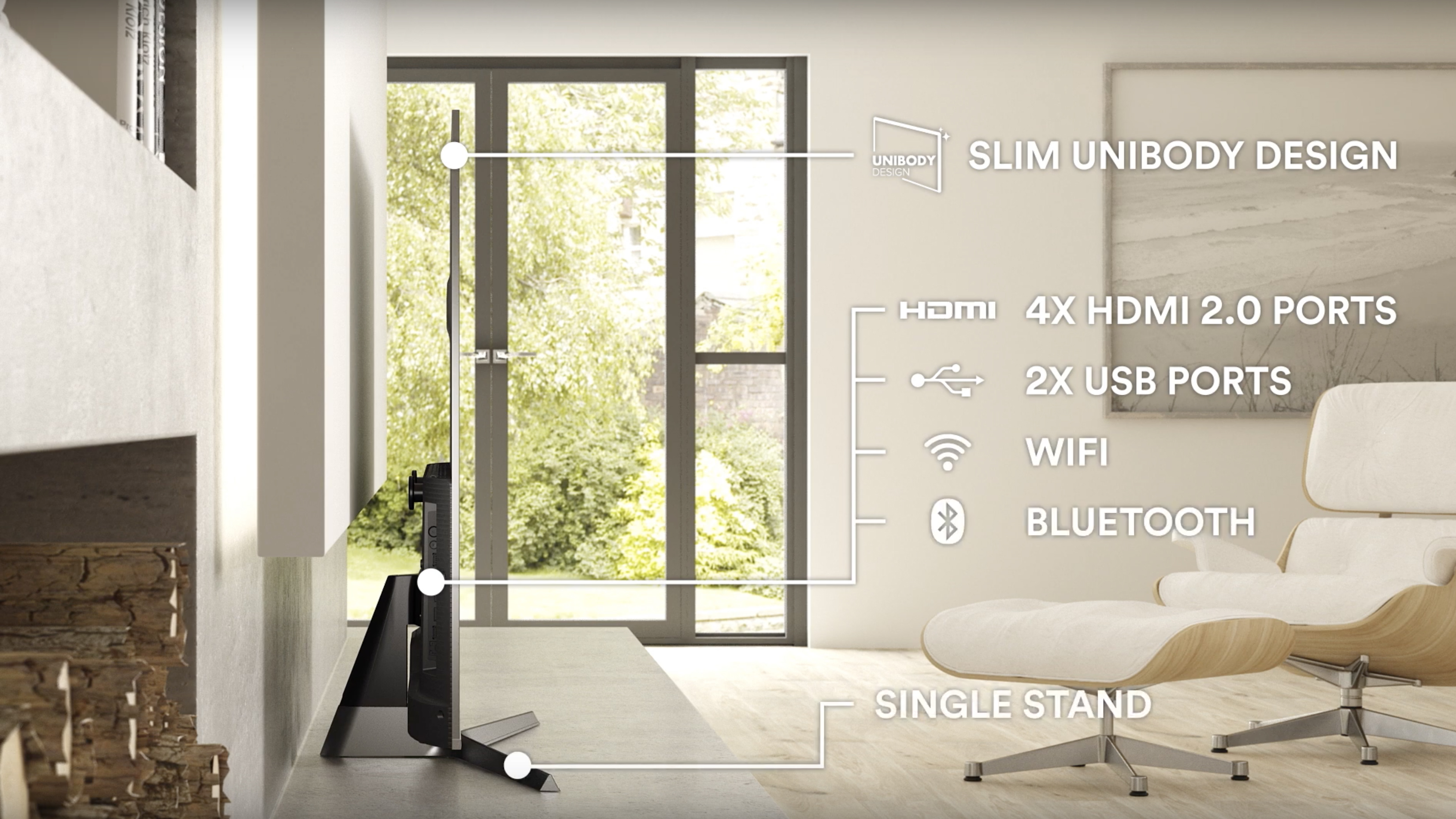
Screen sizes available: 50-inch, 55-inch, 65-inch | Tuner: Freeview HD | 4K: Yes | HDR: Yes (HDR10, HDR10+, Dolby Vision, HLG) | Panel technology: edge LED with local dimming | Smart TV: Yes | Curved: No | Dimensions: 1229(w) x 710(h) x 62(d) mm | 3D: No | Inputs: Four HDMIs (all v2.0), two USBs, RF tuner, Wi-Fi, Ethernet, optical digital audio output, Bluetooth
The connection support is also surprising for the set’s price. Its four HDMI ports are all capable of playing 4K HDR at 60 frames a second, while a pair of USBs support a decent variety of video, photo and music files. There’s Bluetooth and Wi-Fi support, too.
The H55U7B ships with two remotes: one slim and elongated, and the other sporting a more pedestrian design. Both carry direct access buttons for Amazon Prime, Netflix, Rakuten, Youtube and Freeview Play.
Design TL;DR: The Hisense H55U7B is supremely attractive and well-made for its money.
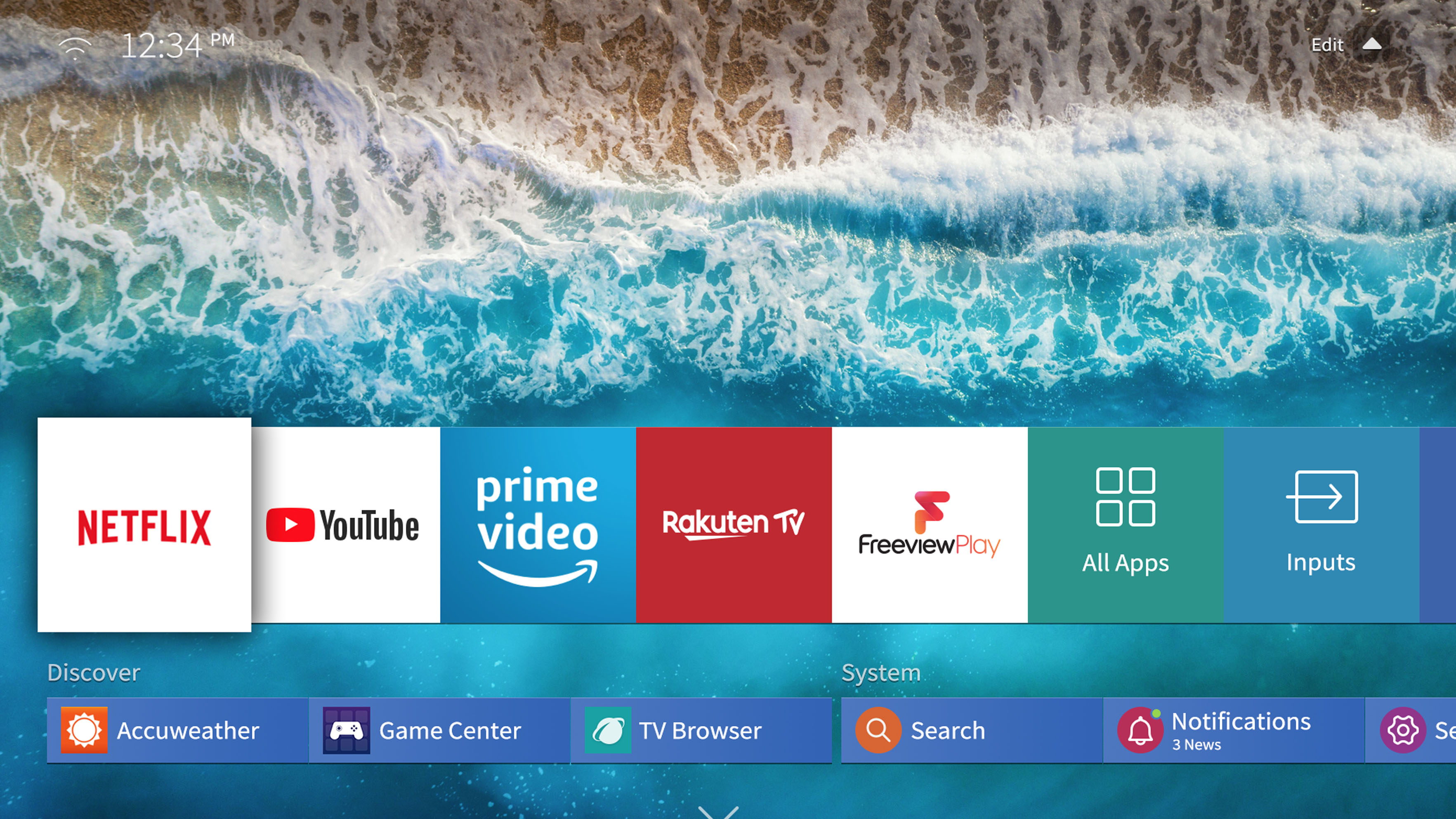
Smart TV (VIDAA)
The H55U7B deploys Hisense’s proprietary VIDAA smart TV system – rather than the Android or Roku systems found on some other current Hisense TVs.
VIDAA is not as content rich or sophisticated as those other systems (especially Roku). It does, however, do the basics pretty well, within a straightforward and stable interface.
These basics include Netflix, Amazon Prime Video, Rakuten, YouTube and Plex apps, complete with 4K and HDR playback where a platform offers them. This includes Dolby Vision HDR playback (if a service supports it).
There’s also Freeview Play, meaning the H55U7B carries the catch-up apps of all the UK’s key terrestrial broadcasters.
The VIDAA interface looks a little dated, but it’s reasonably economical with the screen area it takes up. It ran stably during our tests too, though it’s a little sluggish compared with the most powerful smart TV operating systems.
Smart TV TL;DR: Some aspects of VIDAA are a little rudimentary, but it’s pretty easy to use and provides most of the key apps you’d need.
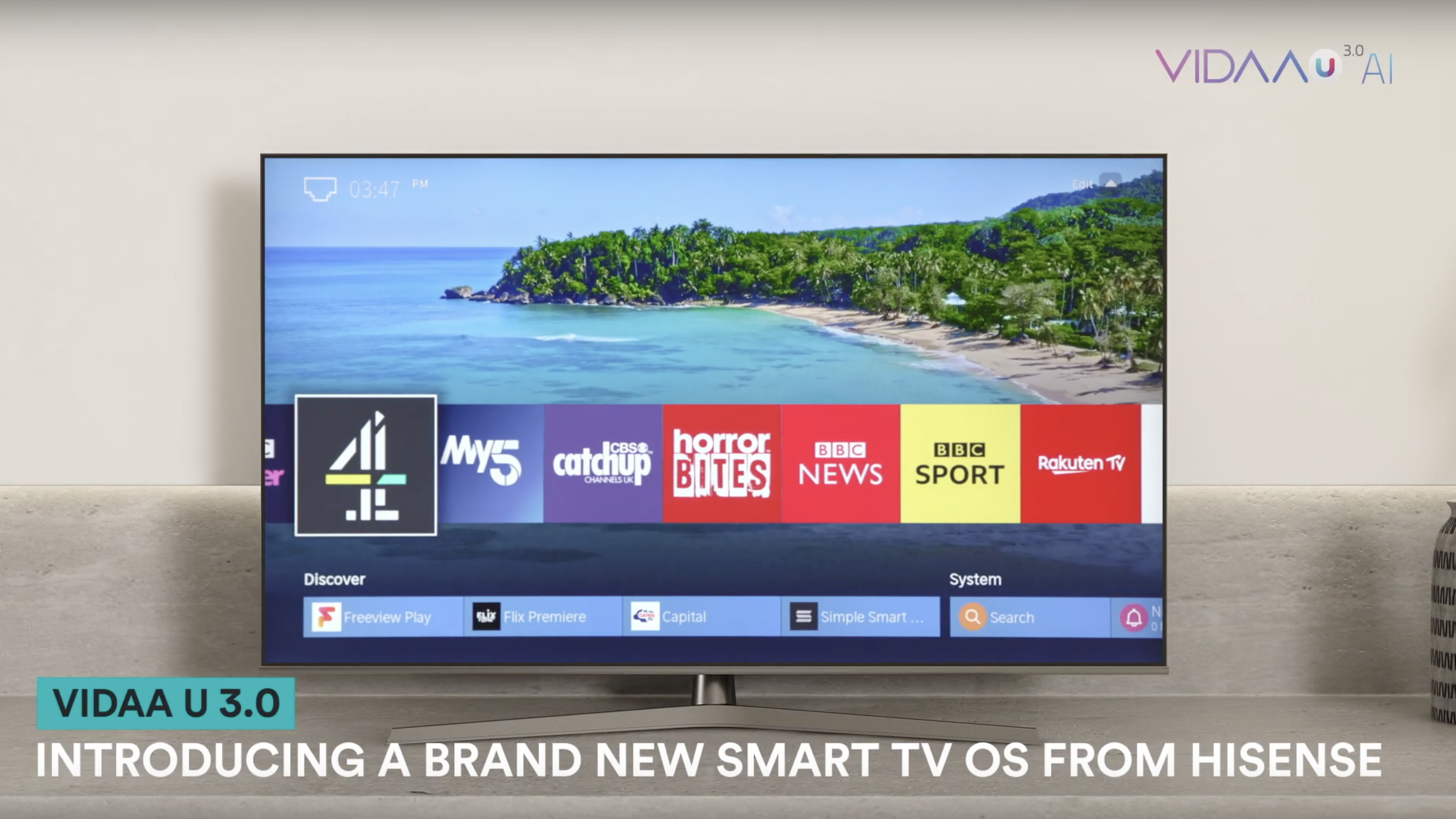
HD/SDR Performance
While the H55U7B is by no means a disaster with HDR (high dynamic range) playback – which we’ll return to later – it’s more consistently comfortable with SDR.
Black levels, for instance, look more even, with less clouding and greater consistency. They track slightly darker than they do in HDR mode, too, with less overlying greyness.
Colours look more balanced and natural with SDR content too, as well as having slightly more kick than you get with most sub-£500 TVs.
While the H55U7B isn’t bright enough to do full justice to HDR, it’s easily bright enough to reveal plenty of subtlety with SDR content. So there’s lots of nuance, for instance, in shadowy SDR areas and subtle colour blends.
The Hisense H55U7B upscales HD content pretty handily for such a cheap TV, remapping to its native 4K resolution without noticeably increased blur or exaggerated video noise. Pictures look generally clean, with no major colour ‘slippage’.
The set’s motion handling is a bit basic compared to premium TVs, as to be expected – though it’s not bad for a sub-£500 model. Upscaled pictures don’t look very sharp, either, though the H55U7B’s HD SDR pictures avoid the most distracting upscaling issues we usually run into, making for surprisingly immersive pictures.
HD/SDR Performance TL;DR: The H55U7B is more accomplished and balanced with SDR and HD content than most similarly-priced TVs.
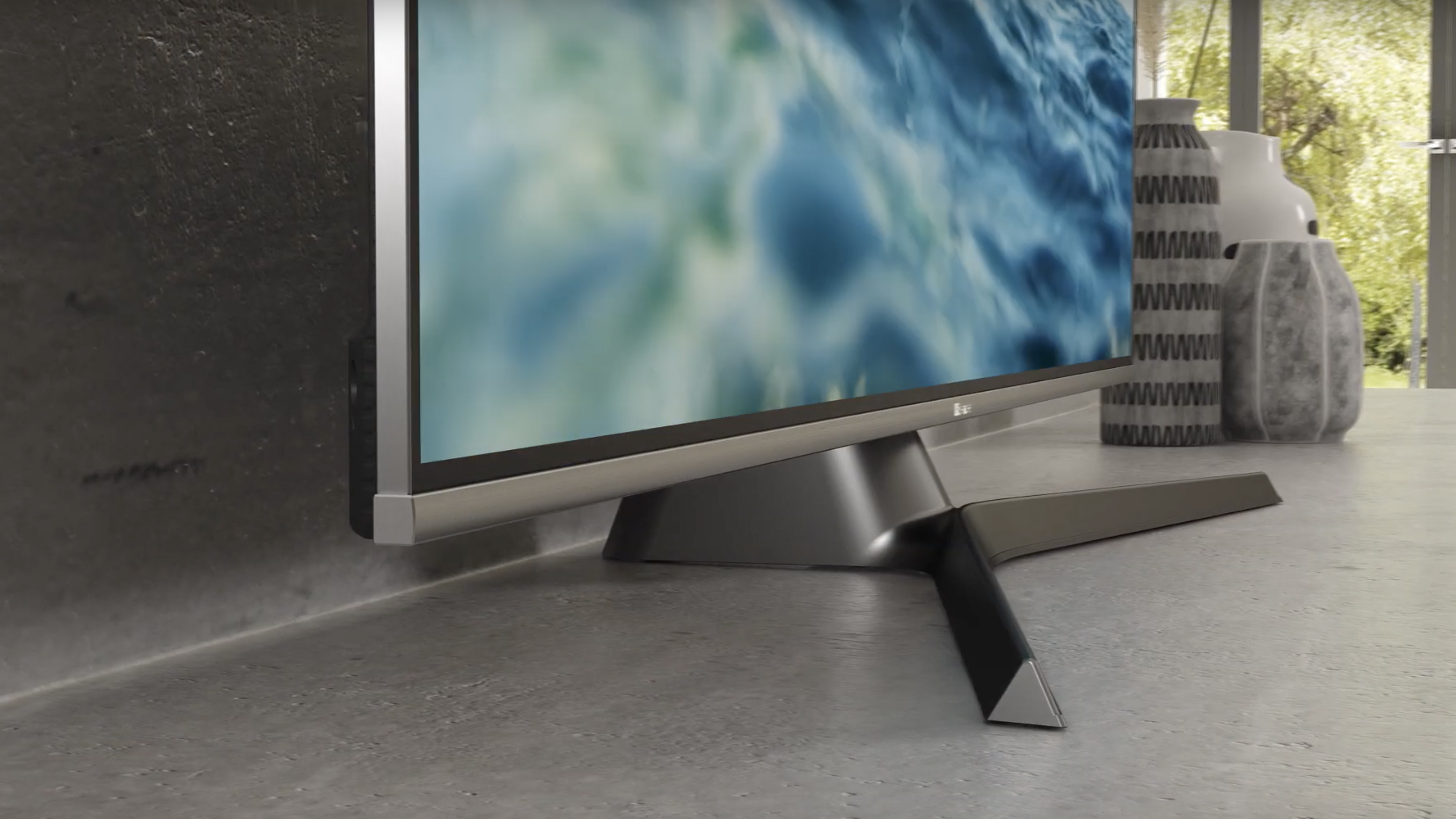
4K/HDR Performance
High dynamic range sources can look better on the H55U7B than you’d expect for just £500. If you use the HDR Dynamic picture preset, for instance, pictures look surprisingly bright for a TV that only measures 319 nits of light output on a white square covering 10% of the screen. (High-end HDR TVs deliver between 1,000 and 2,000 nits.)
Colours look richer in bright areas than they typically would on a TV as cheap as this, thanks to the ULED panel’s wide colour gamut. Many screens at this level just don’t have the colour range to cope with the wide colour gamut and extra brightness range of HDR, leaving colours looking washed out.
Black levels are pretty strong on the H55U7B too. Not as strong as an OLED TV or premium LCD, of course – but we’d expect to see a lot more graying out in HDR scenes that put a lot of highly dark and highly light content next to each other, given the price point and edge-lighting.
The reason for the H55U7B’s solid contrast performance is doubtless its local dimming system. This sees sections of the LEDs arrayed along the TV’s top or bottom edge able to output different amounts of light from each other at any given moment, to suit the demands of the picture.
Unfortunately, though, this local dimming also has a downside. Where really bright objects appear against very dark backdrops, it can generate a distracting vertical bar of light running right down the screen around the bright object. Especially if you’re using the local dimming feature on its most powerful setting.
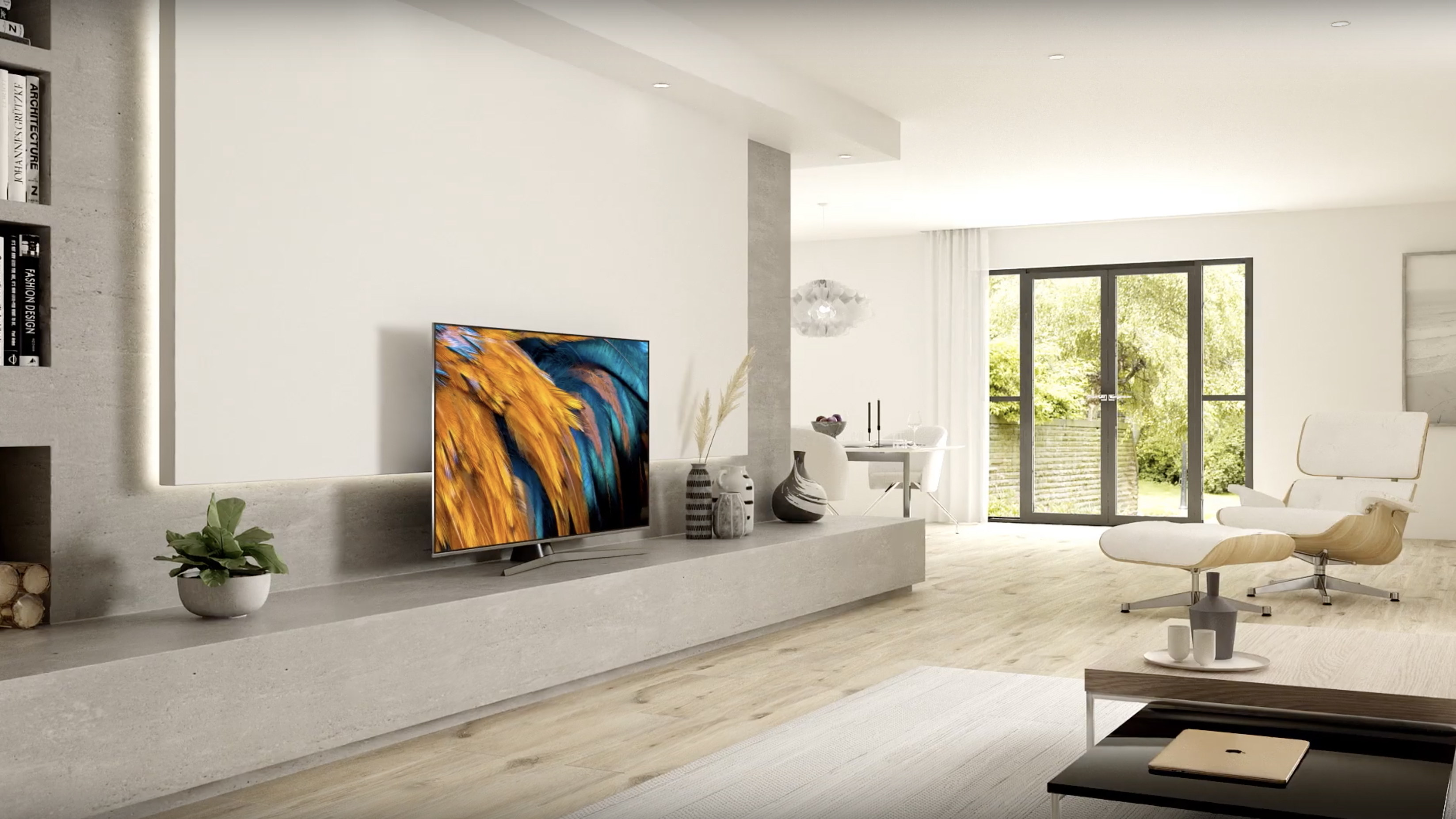
The vertical backlight bar impact can be reduced if you turn down the local dimming. And you can remove it entirely if you turn local dimming off. But both of those options cause a pretty major drop off in the screen’s black levels.
The issue is also less distracting when using the H55U7B’s less strident HDR Day or HDR Night presets. However, both of these presets are far less bright, and less vivid than the Dynamic preset. While they deliver a more accurate HDR experience – in the sense that they try to produce a wider range of light, rather than focusing so hard on just the bright end of the light spectrum – they end up feeling really quite drab after you’ve experienced the Dynamic mode.
The HDR Dynamic mode also presents much more shadow detail in dark areas than the HDR Day/Night modes. Although this is mostly a good thing, it can also see the Dynamic mode bringing out noise in dark areas that was supposed to have stayed hidden.
Put all this together and I think the H55U7B would really have benefited from an extra picture preset that sits somewhere between the eye-catching but slightly excessive Dynamic HDR setting and the dialled-back HDR Day mode.
Another issue is the way some HDR colours – especially skin tones – take on a slightly yellow undertone in HDR. It’s worth noting, though, that colours tend to look more balanced and natural if you feed the H55U7B a Dolby Vision or HDR10+ dynamic signal. These carry extra scene by scene picture information to help TVs render HDR better, and this certainly seems to help the H55U7B out.
Finally, viewing from an angle causes a reduction in colour and contrast (as with all cheap LCD TVs), and finally, while HDR10+ worked fine from an Oppo 205 player, it was buggy via a Panasonic UB820 4K Blu-ray player, and oddly seemingly wasn’t detected at all via the Amazon app.
HDR/4K Performance TL;DR: The H55U7B can look bright and colourful with HDR, but there are limitations and distractions, and the presets could be more helpful.
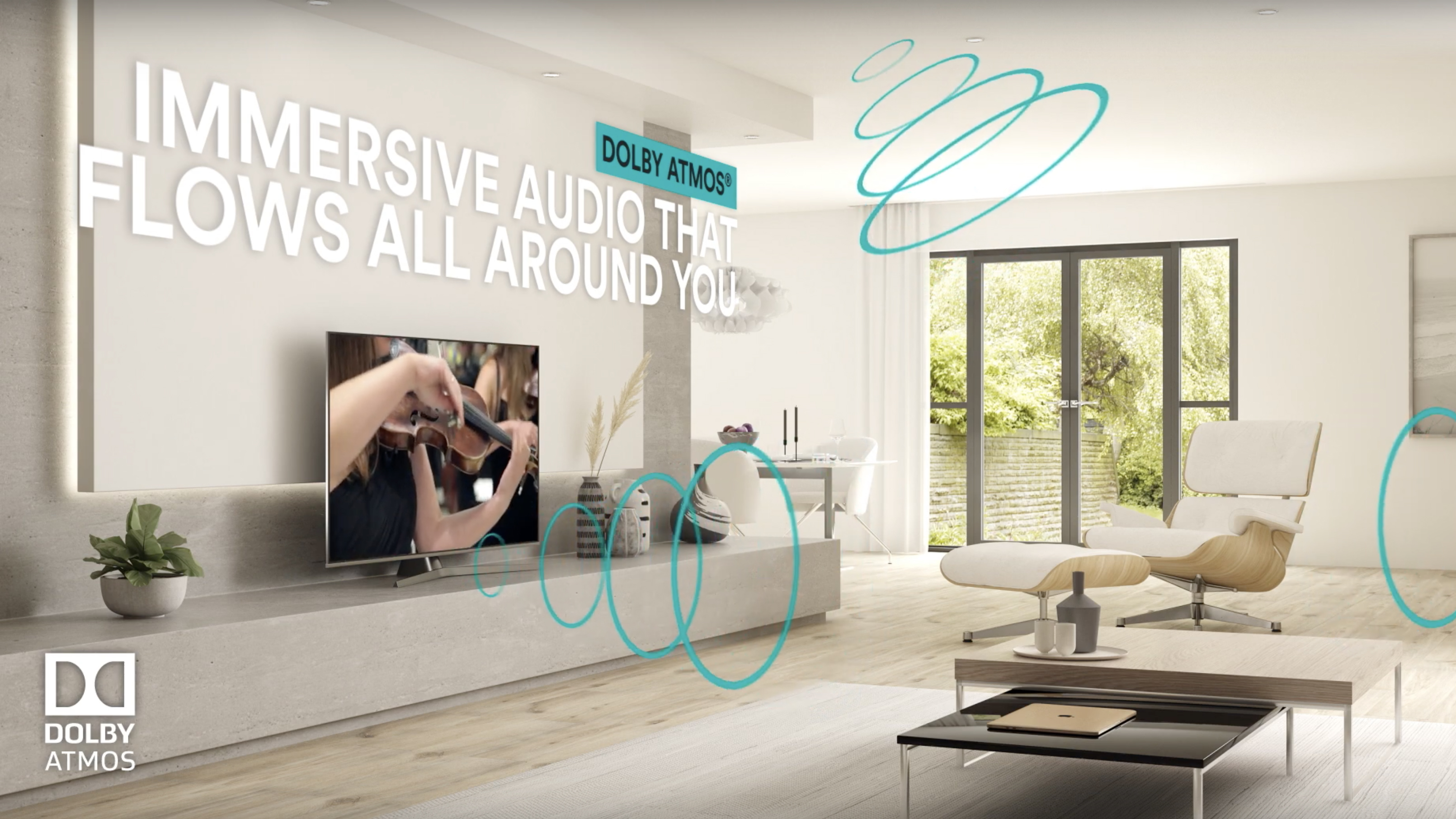
Sound
The H55U7B is a solid audio performer. The high frequencies don’t distort at loud volumes, and while bass doesn’t get very low, it is at least clean and well-timed.
The Dolby Atmos mode delivers a nicely expanded soundstage, too, even if it doesn’t ever really sound like Dolby Atmos with such limited built-in speakers. (You’ll need one of these Dolby Atmos speakers for that.)
Voices can get a bit lost during loud moments, though, and tend to sound a bit indirect and muted thanks to a lack of speaker projection and raw power.
Sound TL;DR: The sound isn’t shockingly bad, but you’ll probably find yourself wanting to add a soundbar when funds permit.
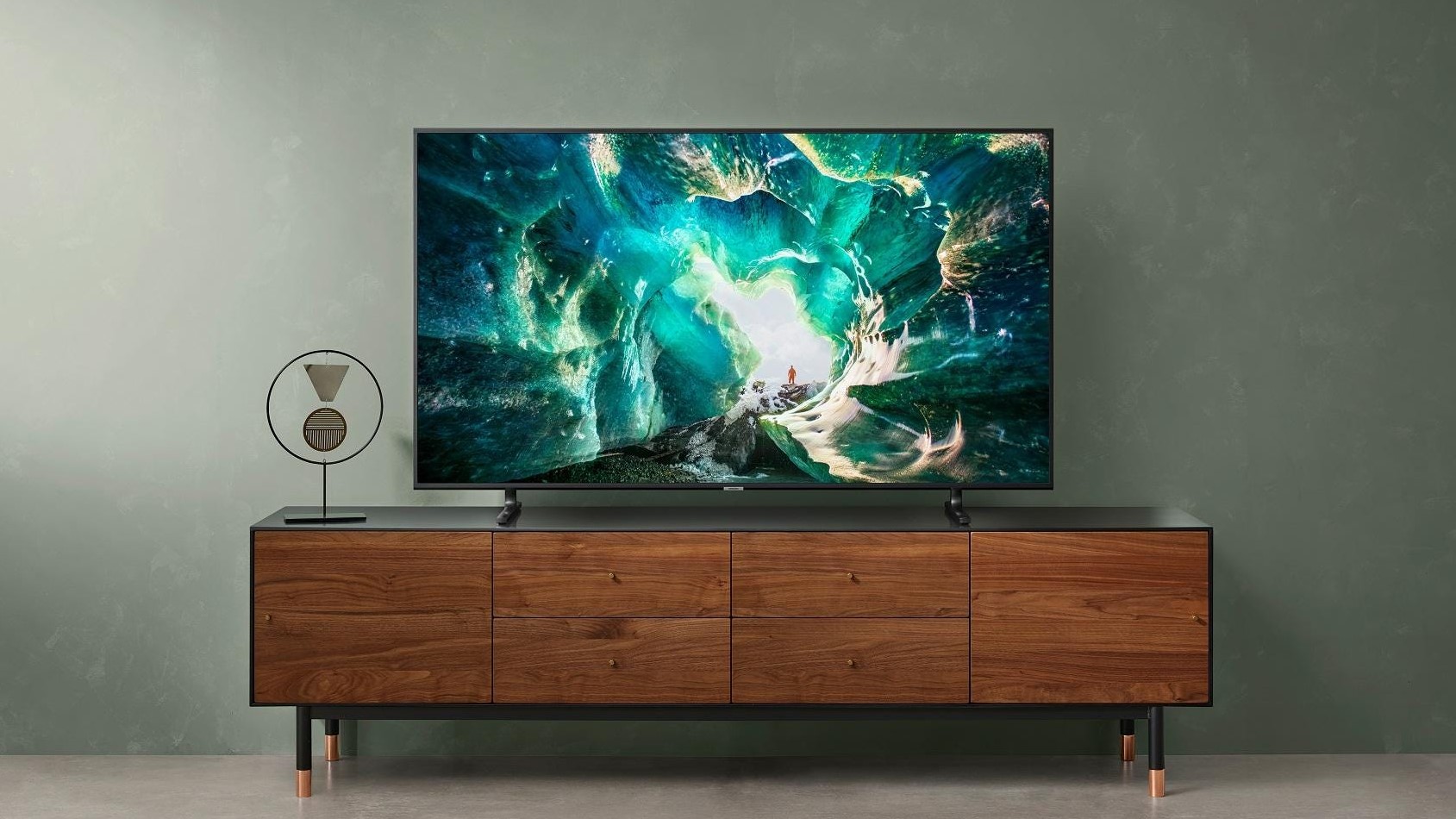
Other TVs to consider
Recent price cuts have seen Samsung’s UE55RU8000 now drop to around £650. This is a very appealing price for a TV that combines superior picture quality with a more sophisticated smart system. But of course, it is still £150 more than the Hisense H55U7B, and it doesn’t support Dolby Vision.
Also worth considering is the Philips 55PUS6814, which combines slightly better 4K HDR picture quality with Philips’ Ambilight design. It does, however, costs £100 more than the H55U7B.
Verdict
You always have to accept some performance compromises – especially with HDR – if you buy a budget LCD TV, and the Hisense H55U7B is no different.
The H55U7B is slightly less compromised than many of its similarly priced peers, though, so if you want a feature-rich 4K HDR LCD TV in a remarkably sleek design, and £500 is as far as your budget can stretch, Hisense’s set is still worth considering.
- Hisense TV 2020: everything Hisense has coming this year
John has been writing about home entertainment technology for more than two decades - an especially impressive feat considering he still claims to only be 35 years old (yeah, right). In that time he’s reviewed hundreds if not thousands of TVs, projectors and speakers, and spent frankly far too long sitting by himself in a dark room.

